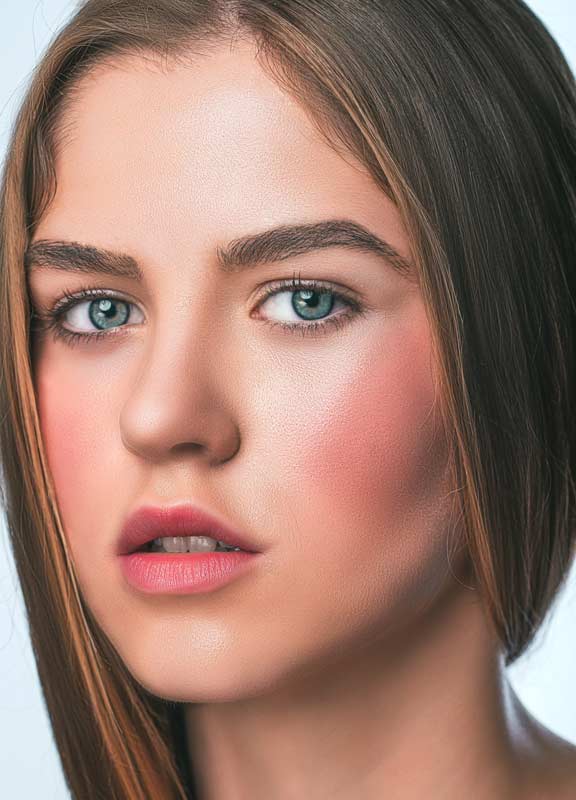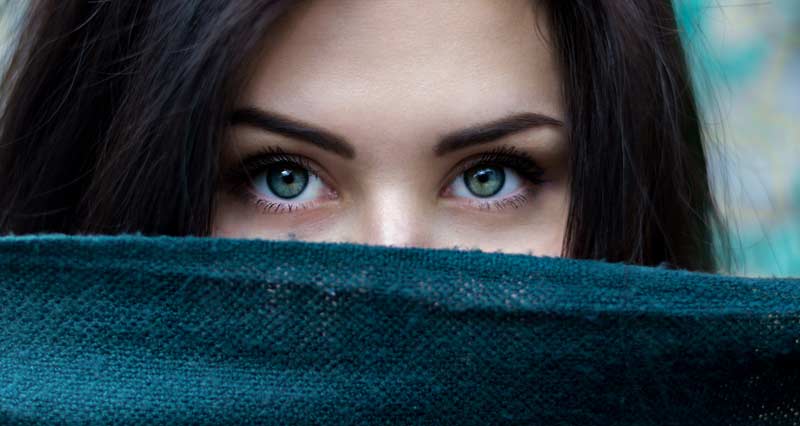In this age of social media, looks can be very deceiving. The photos on social media often bear little resemblance to when they were taken because they can be digitally manipulated.
A skilled Photoshop master is able to do just about anything to a photo, including making someone look a whole lot better than in real life. A broad nose becomes slim, a thick waist turns into a thin one, flabby upper arms become smooth, eyes look brighter and teeth look whiter.
“Photoshop Holy” – digital manipulation for perfection

A Photoshop master and Weibo user named Kanahoooo has mad photo-editing skills that will make you question those stunning photos you see of people on social media.
She has a huge following on Chinese social media, where she is referred to as “Photoshop Holy.” She says you shouldn’t believe the perfection you see online. People reportedly ask her to make their images look more ‘shiny’ on social media.
The people in the after photos can hardly be recognized from the before photos, often looking slimmer and more beautiful. Her images show just how thin the line is between the beautiful and the not-so-beautiful.
People comment that the photos look unnatural and don’t necessarily make everyone look better. Her response is that what she does is a type of entertainment and that she thinks it is fun to try and make people look different.
Her wizard-level photo editor’s skills are in demand and she is really good at making young girls look perfect. They seek perfection because they feel it is necessary if they want to get ‘likes’ and followers on social media.
Becoming a Photoshop master requires practice
An integral part of digital photography is the post-processing stage. Even when you’ve taken an acceptable photo, there is usually room for some photo editing magic if you want to take it to the next level.
Using Photoshop tools, you can correct issues like slight over-exposure that can wash out skin color and features but it is possible to go a great deal further than that.
Mastering the basics first
Simply learning how to use some of the basics of Photoshop can take time. Adele Markus, a graphic designer who works for Best Essays, says she battled at first to learn how to use the layer panel. She says her early attempts looked as though a child had been busy and it took practice to get the best quality from a photo by applying layering.
Some of the tools in Photoshop are fairly straightforward and easy for beginners to use, whereas others are much more complex and it may take time before you’re ready to use them.
For example, Brightness/Contrast, Exposure, and Shadows/Highlights simply require moving sliders to the right or left to make adjustments. However, more advanced edits require learning how to read a histogram or a chart that shows the tonal range in the photo you’re editing.
Dealing with slight imperfections
Photoshop has many photo-editing tools, such as a Spot Healing Brush you can use to get rid of blemishes and a Clone Stamp tool that allows you to copy pixels from a selected area and then clone it on to another area.
This makes it easy to remove imperfections like a stain on a model’s clothes you didn’t see during a shoot, a spot on the skin, any odd patterns, or a dirty background.
Working on the eyes

One element in photos that can be tricky to get right is the eyes. The less you do to them, the more natural the effect. It’s fine to work on them if they appear a little puffy or have bags under them. However, adding too much sparkle tends to look unnatural and may even make them look unearthly.
Perhaps you’re working on a photo where the model’s eye bags give away the fact that she got little sleep the night before the photoshoot. It takes some practice to improve photos without the changes you make being easy to notice.
Learning how to reduce puffy eyes in Photoshop is not that difficult, but there are different ways to accomplish this and some ways offer a better result than others.
Adjusting colors and shadows
When you start adjusting colors and shadows, you have to understand curves, how to layer and create contrast without creating a collage of blurred colors and overlapping shadows.
Practice makes perfect

When you’re new to a photo-editing program, it is easy to either avoid or overuse fascinating features. The more you use the photo-editing software, the more adept you become.
Kanahoooo or “Photoshop Holy” shares tricks on how to retouch images on her homepage and launches challenges that give other Weibo users a chance to practice and to show off their Photoshop talents. Perhaps your idea of perfection is different from hers – but you still need to put in the time and practice if you want to improve your skills.
Transform photos in Lightroom
Many professional photographers are able to transform photos in Lightroom. This popular photo editing software has many compelling editing functionalities. It allows you to apply your own style, be creative and differentiate your work from other photographers.
Using Lightroom does have a learning curve, but it is not as difficult as learning Photoshop. It is fun to play around with all the features and see what kind of results you can achieve.
When you are learning various editing programs, it takes time to understand how and when to use the various features. Trying too hard to incorporate them too soon is a mistake that beginners often make.
Keep comparing with the original image

A good rule of thumb when photo editing is to make the final images look as natural as possible. In the beginning, it is often tempting to over-contrast or over-saturate a photo, but with time it becomes easier to recognize when an image is well balanced.
Comparing the original image with the edited version while making changes helps you to quickly realize when a photo begins to look unrealistic. For instance, when you want smooth skin, take it slow and work next to the original image so you can see when the skin starts to look plastic.
Less is often more when it comes to photo-editing. For instance, having a bright smile is engaging but over-whitening teeth can make a photo look fake. You don’t want the focal point of the photo to be glaring white teeth.
Conclusion
Editing photos can be fun but you don’t want to fall victim to over-editing. Too many edits will make your photos look unnatural. Of course, if you’re like Kanahoooo, your brief may be to make someone look completely different and you will have great fun doing it. However, if you want to keep your photos looking natural, make only changes you feel are necessary and leave it at that.
About author
Tiffany Harper is a talented writer from New York, an extremely active woman, and a real leader. She began her career as a journalist and later proceeded as an educational writer and editor. Now she works as an experienced subject matter expert with best writing services, sometimes she works as the content consultant dissertation writing service and thesis writing service, like essay writing service in UK, mostly in technology, business, and marketing area. Please do not hesitate to contact her on Twitter.